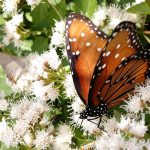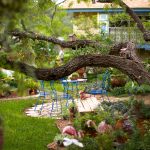If it’s a wet winter, you may need to wage a war on weeds. Here are the five usual suspects to watch for.
Cooler temperatures and winter precipitation make picture-perfect growing conditions not just for wildflowers, but for winter weeds too. When dormant turf grass isn’t growing and the mower isn’t visiting regularly, weeds have a huge opportunity to get started in every yard, and their distinctive rosettes and leaves are beginning to pop up now.
Winter weeds are tough, and they flower and set seed around the same time as wildflowers. Here are a few of the usual suspects.
Beggar ticks (Torilis arvensis) – Beggar ticks look innocent enough when their tiny white flowers are in bloom, but beware: when the seeds mature in spring, they’ll be coated in tiny prickles that completely coat shoelaces, socks, pants and pets. In early spring it can still be pulled by hand, especially when the ground is moist, but the roots are surprisingly deep – it’s a relative of carrots, after all.
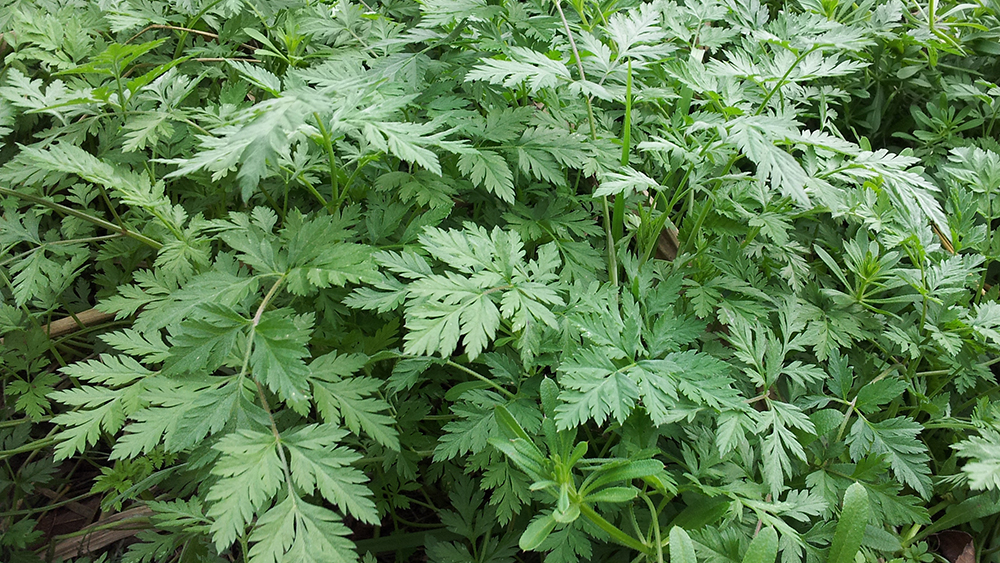
Bedstraw (Galium aparine) – Call it bedstraw, cleavers, catchall or Velcro plant: the name describes the scratchy hooks that cover the leaves, stems, and seeds. Bedstraw forms climbing, tangling, sticky piles of smothering mass in shaded areas. It can be an irritant for us mammals and gardeners, and a smotherer of small wildflowers and spring bedding plants. Early in the season, it can still be easily pulled up by hand, hoe or even a broom (since it sticks to just about everything.)
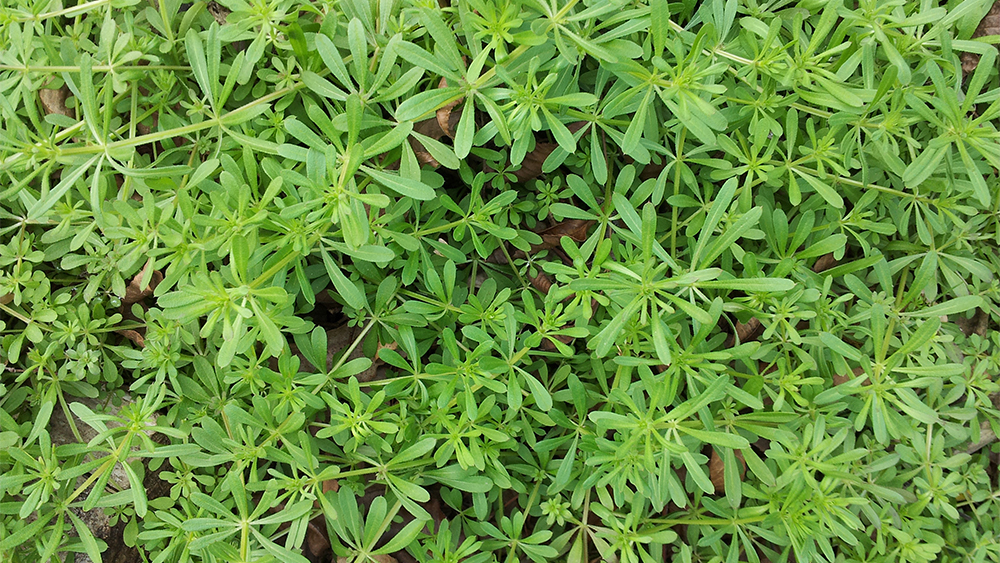
Henbit (Lamium amplexicaule) – Pink and purple flowers on square mint stems are the hallmarks of henbit, which forms spreading piles in flowerbeds and lawns. It’s a mint, so it’s pushy, but young plants can be easily dispatched with a hoe. It’s edible and makes nice flower arrangements, which may be another way to remove it from turf grass this time of year.
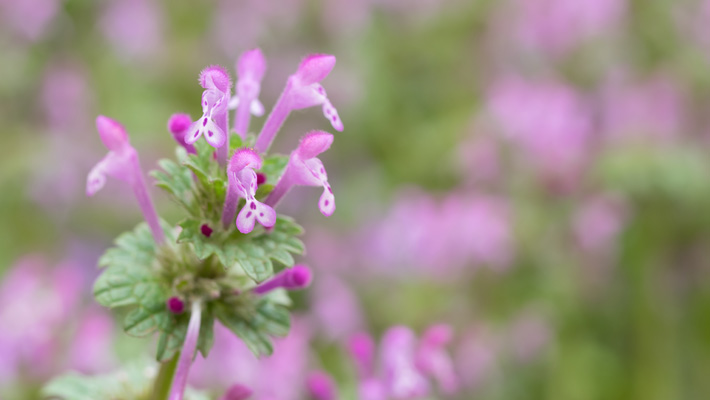
Sow thistle (Sonchus oleraceus) – Its early rosettes may be mistaken for dandelion or poppy, but sow thistle’s clawlike leaves can give a shock if you rub them the wrong way. The seeds resemble dandelion and spread easily in the wind. Even in heavily managed sites, the deep roots make this a difficult weed to control, other than by repeated cutting and digging.
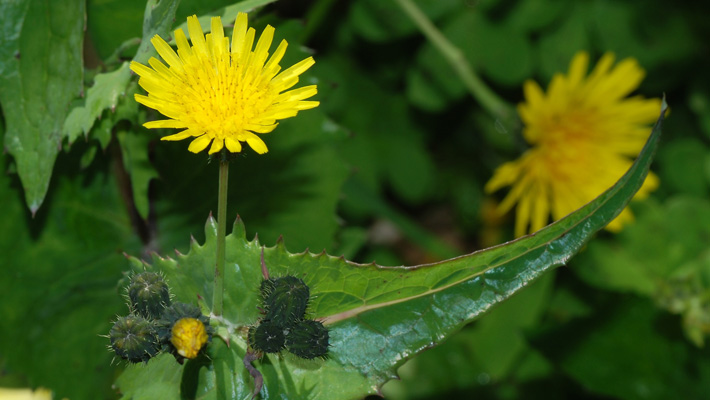
Bastard cabbage (Rapistrum rugosum) The name says it all – this giant perennial mustard bush can grow up to four feet tall and cover the roadways in central Texas with a monoculture of tiny yellow flowers resembling broccoli – especially after a wet winter. It’s a particular threat because it crowds out Texas wildflowers. The big basal rosettes are a familiar sight in winter turf.
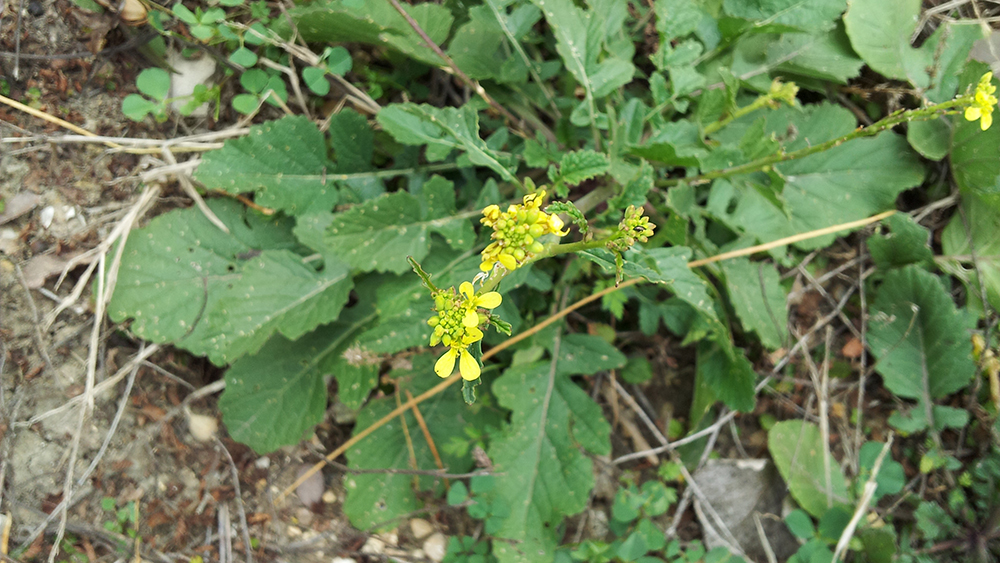
One of the best ways to limit all these weeds above is leaving your irrigation off between November and March, when most other plants are dormant. (As long as it rains once a month, you shouldn’t need to supplement it at all.)
With recent rain it’s pretty easily to hand pull weeds for the time being. But once they start flowering, your best weapon is probably your mower or weed eater: if you can keep cutting them, you can prevent some of them from setting seed and returning next year.



